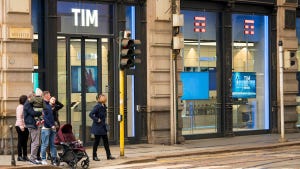MSO Bandwidth Plans Vary
Cable ops are eager to squeeze more out of their existing bandwidth, but not all are exactly uniform in how they're going about it
April 3, 2009

WASHINGTON -- The Cable Show -- MSOs are eager to get the most bang out of their bandwidth, but not all operators are uniform in the approaches they're taking to ensure there's plenty of room for Docsis 3.0 , more hi-def television, and other spectrum-eating services.
Here at the show on Thursday, some of the industry's top technical minds outlined their technology initiatives during the session titled "Cable Technology and the Platform for Change."
There were no real surprises from the cable’s chief technologists this year -- and no talk of pursuing any fiber infrastructure initiatives such as Radio Frequency Over Glass (RFoG) or Docsis-powered PON. (See RFoG Gets the Squeeze.) Instead, they focused on projects that are already well underway.
In the area of network capacity, Comcast Corp. (Nasdaq: CMCSA, CMCSK) reported good results for its analog reclamation project using simple, low-cost digital terminal adapters (DTAs). (See Comcast Sends In the All-Digital 'Cavalry' and Comcast's DTAs: Security Optional .)
Tony Werner, EVP and CTO of Comcast, said the MSO’s self-install rate for DTAs was approaching 80 percent, and that the technology was helping Comcast “recreate the analog experience” as best as possible. “The hardest problem for customers has been programming the remote for the TV,” said Warner.
Time Warner Cable Inc. (NYSE: TWC) is taking a much different approach with an aggressive deployment of switched digital video (SDV). TWC EVP and CTO Mike LaJoie said the operator now has SDV technology turned up in with most systems, enabling the MSO to carry more than 100 hi-def channels in some markets.
Trends continue to point to all-digital networks and the move away from broadcasting to video models centered on unicasting and multicasting. “We’re all managing to these ends,” said Lajoie.
Cablevision Systems Corp. (NYSE: CVC), meanwhile, is managing bandwidth using both SDV and analog reclamation, and just recently announced plans to stop marketing an expanded basic tier in analog format by the end of 2009. (See Cablevision Eyes All-Digital Future .) Jim Blackley, Cablevision's SVP of corporate engineering and technology said the MSO's digital penetration has reached 93 percent, and some areas have already gone all-digital.
Cable in the cloud
Operators are warming to the idea of offering network-based DVR services using a video in the “cloud” model. Cablevision is the farthest along the path to providing such services with its so-called "Remote-Storage-DVR" (RS-DVR) approach. (See Supremes Consider Cablevision's RS-DVR .) The strategy should allow Cablevision to continue pursuit of a "thin-client" set-top strategy, because the RS-DVR allows the operator to turn digital boxes without onboard hard drives into a DVR-capable device.
This cloud computing concept could also be extended to search and recognition engines, telescoping and interactive ads.
Comcast, meanwhile, is still centering on a Residential Network Gateway (RNG) spec that enables multiple vendors to build several new box classes, including high-end models, for the MSO. Werner, however, is supportive of the video cloud concept.
“There is likely to be a transitional period when you take money out of set-top and put it back into the network," Werner said.
Advanced home networking technologies are also gaining interest among MSOs, and Multimedia over Coax Alliance (MoCA) is a technology that appears to be picking up steam at both Comcast and Time Warner Cable.
TWC is starting to take boxes equipped with MoCA standard and is presently working on the software. (See TWC, Moto Team on Muli-Room DVR .) Comcast’s Werner said system-on-a-chip implementations of MoCA are improving the economics of the technology. “The cost of initial non-integrated MoCA chip caused a stutter,” he said.
— Patti A. Reali, Special to Cable Digital News
You May Also Like










